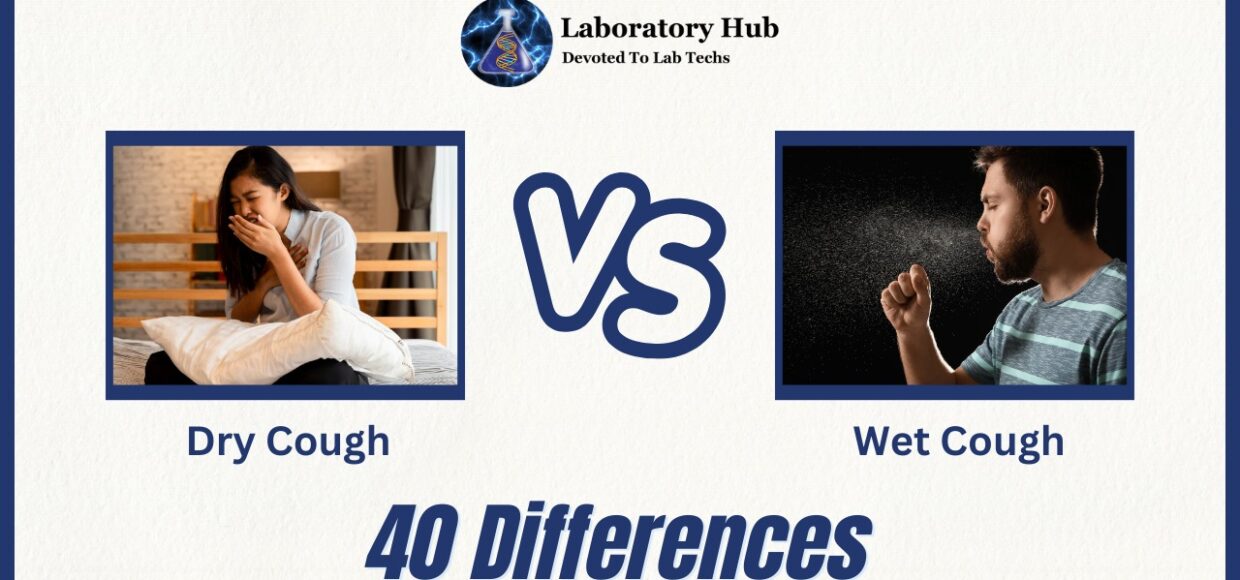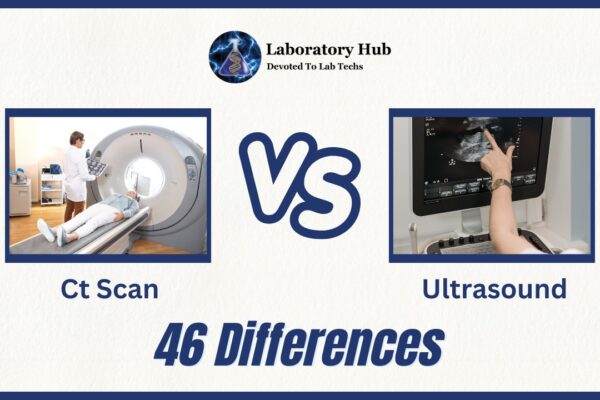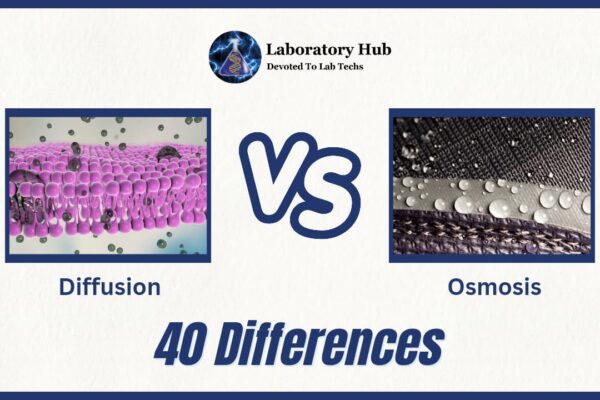40 Differences Between HSV-1 And HSV-2
HSV-1 and HSV-2 are two types of herpes simplex viruses that produce multiple kinds of herpes infections.
HSV-1
HSV-1 is an abbreviation for Herpes Simplex Virus Type 1. It is a virus that is mostly responsible for oral herpes infections, sometimes known as cold sores or fever blisters. Here are some important facts concerning HSV-1
HSV-1 is primarily transmitted through direct contact with the saliva of an infected individual. Kissing, sharing utensils, or engaging in oral-genital contact are all examples of this. Contact with open sores or blisters caused by the virus can potentially spread it. HSV-1 infections can cause tiny, painful, fluid-filled blisters or sores on or around the lips, mouth, and sometimes the face. These sores are also known as cold sores or fever blisters. Symptoms of the early infection may include fever, sore throat, and swollen glands.
HSV-1 is extremely common around the world. Many people become infected with the virus as children, often through non-sexual circumstances such as exchanging utensils with someone who is infected. As a result, the virus is carried by a substantial proportion of the population, yet not everyone experiences frequent outbreaks or obvious symptoms.
Also Check: 40 Differences Between HSV-1 And HSV-2
HSV-2
HSV-2 is an abbreviation for Herpes Simplex Virus Type. HSV-2 is primarily connected with genital herpes infections, causing genital and anal sores and blisters. Sexual contact, including vaginal, anal, and oral sex, is the primary mode of transmission.HSV-2 infections are more severe and symptomatic than HSV-1 infections. Recurrent outbreaks with symptoms such as painful blisters, itching, and discomfort is possible.
HSV-2 is primarily transmitted via sexual contact, which includes vaginal, anal, and oral intercourse. When a person with an active outbreak of genital herpes comes into direct touch with the mucous membranes or skin of a sexual partner, the virus is most usually transmitted. Infections with HSV-2 can cause painful, fluid-filled blisters or sores in the vaginal and anal regions.
Other indications of an outbreak include fever, muscle aches, and swollen lymph nodes. Globally, SV-2 is one of the most common sexually transmitted infections (STIs). While the frequency varies by geography and demographic, HSV-2 infects a sizable proportion of the adult population. Many patients infected with HSV-2 may be unaware of their infection since they do not exhibit any symptoms.
Also Read: Innate Immunity vs Adaptive Immunity- 35 Differences
S.No. | Aspect | HSV-1 | HSV-2 |
1 | Type | Herpes Simplex Virus Type 1 | Herpes Simplex Virus Type 2 |
2 | Location of Outbreaks | Typically causes oral herpes (cold sores) | Typically causes genital herpes (sores) |
3 | Primary Site of Infection | Often infects the mouth, lips, and face | Often infects the genital and anal areas |
4 | Mode of Transmission | Can be transmitted through oral contact | Usually transmitted through sexual contact |
5 | Prevalence | Very common; estimated global prevalence is high | Common, but generally lower prevalence |
6 | Infection Route | Can be transmitted through kissing, sharing utensils | Primarily through sexual contact |
7 | Genital Infection | Can also cause genital herpes | Can cause genital herpes as the primary infection |
8 | Recurrence Frequency | Less frequent recurrent genital outbreaks | More frequent recurrent genital outbreaks |
9 | Transmission to Genitals | Can cause oral-genital transmission | Often transmitted through sexual activity |
10 | Herpetic Whitlow | Rarely associated with herpetic whitlow | Can lead to herpetic whitlow (finger infection) |
11 | Antiviral Medications | Antiviral medications can be used for treatment | Antiviral medications are commonly used |
12 | Infection in Neonates | Can cause neonatal herpes if transmitted to newborns | Can cause neonatal herpes if transmitted to newborns |
13 | Neurological Complications | Associated with occasional neurological complications | Rarely associated with neurological complications |
14 | Oral-to-Genital Transmission | Less likely to cause oral-to-genital transmission | More likely to cause oral-to-genital transmission |
15 | Immune Response | Can develop immunity to both HSV-1 and HSV-2 | Can develop immunity to both HSV-1 and HSV-2 |
16 | Vaccine Availability | No specific vaccine against HSV-1, but some vaccines help reduce severity | No specific vaccine against HSV-2, but research ongoing |
17 | Asymptomatic Shedding | Can occur and contribute to transmission | Common, shedding increases transmission risk |
18 | Oral Ulcers | Commonly causes cold sores and oral ulcers | Rarely causes oral ulcers |
19 | Latency in Nervous System | Latent infection often in trigeminal ganglia | Latent infection often in sacral ganglia |
20 | Primary Infection Symptoms | Oral sores, fever, and flu-like symptoms | Genital sores, itching, and discomfort |
21 | Disease Severity | Often less severe symptoms in primary genital infection | Symptoms can be more severe in primary genital infection |
22 | Oral Contact Risk | Close contact and kissing can spread virus | Close contact less likely to transmit virus |
23 | Eye Infection Risk | Can lead to ocular herpes (eye infection) | Can lead to ocular herpes (eye infection) |
24 | Complications in Immunocompromised | Can lead to serious complications in immunocompromised | Can lead to serious complications in immunocompromised |
25 | Triggers of Outbreaks | Sun exposure, stress, illness, and hormonal changes | Stress, illness, and hormonal changes can trigger outbreaks |
26 | Role in Encephalitis | Rarely associated with herpes simplex encephalitis | Rarely associated with herpes simplex encephalitis |
27 | Viral Shedding | Less frequent viral shedding | More frequent viral shedding |
28 | Neonatal Infection | Less likely to cause severe neonatal infection | More likely to cause severe neonatal infection |
29 | Coinfection with Other STDs | Often found in individuals with other STDs | Less commonly associated with other STDs |
30 | Oral Herpes Treatment | Antiviral medications can reduce symptoms | Antiviral medications can reduce symptoms |
31 | Genital Herpes Treatment | Antiviral medications can reduce symptoms | Antiviral medications can reduce symptoms |
32 | Impact on Pregnancy | Generally not a major concern during pregnancy | Can pose risks to the fetus during pregnancy |
33 | Risk of Spreading to Partner | Less risk of transmitting to partner with oral-genital contact | Higher risk of transmitting to partner through sexual activity |
34 | Cold Sores | Commonly causes cold sores on the lips | Rarely causes cold sores |
35 | Genital Ulcers | Rarely causes genital ulcers | Commonly causes genital ulcers |
36 | Disseminated Infection | Less likely to cause disseminated infection | More likely to cause disseminated infection |
37 | Affected Body Parts | Primarily affects the mouth and face | Primarily affects the genital and anal areas |
38 | Transmission Prevention | Avoiding oral contact during outbreaks can reduce transmission risk | Safe sexual practices reduce transmission risk |
39 | Sexual Health Counseling | Can play a role in sexual health counseling | Can play a role in sexual health counseling |
40 | Impact on Quality of Life | Can impact quality of life due to visible sores | Can impact quality of life due to recurrent outbreaks |
Also Read: Light Microscope vs Electron Microscope – 40 Major Differences
Frequently Asked Questions (FAQs)
The key distinction is the location of their outbreaks. HSV-1 frequently causes oral herpes and, through oral-genital contact, can also cause genital herpes. The most common cause of genital herpes is herpes simplex virus type 2.
Both viruses are spread by close personal contact, such as kissing, sexual activities, and even sharing personal items such as cutlery or towels with someone who is infected.
There is currently no cure for HSV infections. After the initial infection, the virus stays in the body and can trigger recurring outbreaks. Antiviral drugs, on the other hand, can help manage symptoms and minimise the frequency and severity of outbreaks.
Yes, many people infected with HSV-1 or HSV-2 may have no symptoms or just have minor symptoms that go unreported. This is known as asymptomatic shedding, and it can still result in virus transmission to others.
Using condoms or dental dams during sexual activity, avoiding contact with active sores, and practising excellent hygiene can all assist to limit the risk of transmission.
Stress, illness, hormonal fluctuations, exhaustion, and exposure to sunshine can all cause outbreaks.







